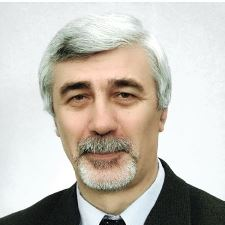Molecular Structure of Macroheterocyclic Compounds
A special issue of International Journal of Molecular Sciences (ISSN 1422-0067). This special issue belongs to the section "Macromolecules".
Deadline for manuscript submissions: closed (30 January 2024) | Viewed by 2941
Special Issue Editors
Interests: DFT; sublimation enthalpies; molecular and electronic structure; mass spectrometry; gas electron diffraction
Interests: molecular structure; intramolecular dynamics; thermodynamics, IR spectra; gas-phase electron diffraction; mass spectrometry; DFT and ab initio calculations
Special Issues, Collections and Topics in MDPI journals
Special Issue Information
Dear Colleagues,
The design of new analogues of porphyrins and porphyrazines with various structures of the coordination center and periphery of the macrocycle, and the determination of their physico-chemical properties are perspective areas in the chemistry of the macrocyclic compounds. The modification of the coordination cavity size, as well as the type and number of central atoms, makes it possible to control the specific physico-chemical properties. The practical application of macroheterocyclic compounds in new areas, such as nonlinear optics, semiconductor and liquid crystal materials, sensor devices, oncology, etc., requires the expansion of their molecular architecture and methods of its construction. Moreover, it is necessary to increase the number of studies devoted to the determination of the relationship between the geometric and electronic structure of molecules and its reactivity under various external conditions as a basis in the development of new materials for the implementation of aimed processes.
We are pleased to invite you to present your works in this Special Issue, which considers experimental and calculated data on the structure of macroheterocyclic compounds.
Dr. Yuriy A. Zhabanov
Prof. Dr. Georgiy V. Girichev
Guest Editors
Manuscript Submission Information
Manuscripts should be submitted online at www.mdpi.com by registering and logging in to this website. Once you are registered, click here to go to the submission form. Manuscripts can be submitted until the deadline. All submissions that pass pre-check are peer-reviewed. Accepted papers will be published continuously in the journal (as soon as accepted) and will be listed together on the special issue website. Research articles, review articles as well as short communications are invited. For planned papers, a title and short abstract (about 100 words) can be sent to the Editorial Office for announcement on this website.
Submitted manuscripts should not have been published previously, nor be under consideration for publication elsewhere (except conference proceedings papers). All manuscripts are thoroughly refereed through a single-blind peer-review process. A guide for authors and other relevant information for submission of manuscripts is available on the Instructions for Authors page. International Journal of Molecular Sciences is an international peer-reviewed open access semimonthly journal published by MDPI.
Please visit the Instructions for Authors page before submitting a manuscript. There is an Article Processing Charge (APC) for publication in this open access journal. For details about the APC please see here. Submitted papers should be well formatted and use good English. Authors may use MDPI's English editing service prior to publication or during author revisions.
Keywords
- macroheterocycles
- molecular structure
- electronic structure
- XRD
- DFT
- ab initio







